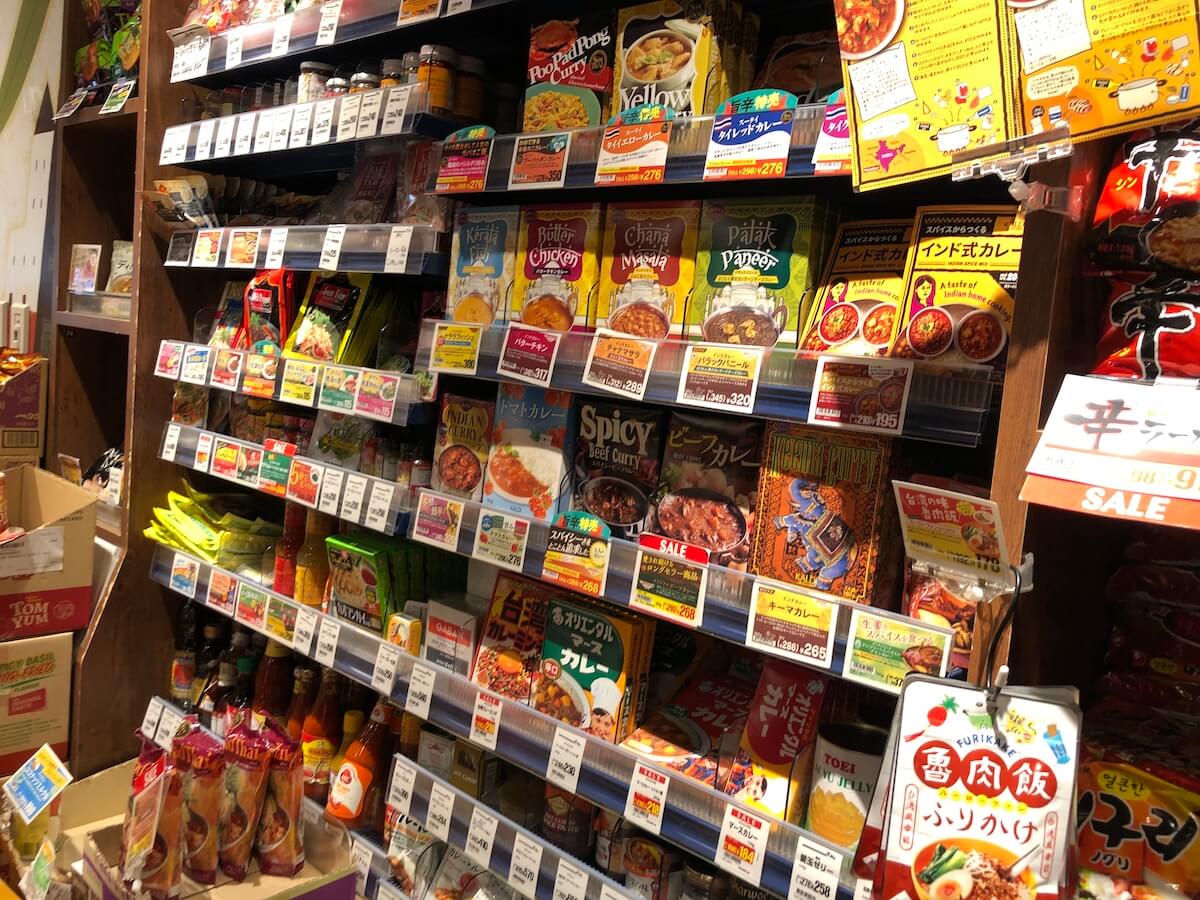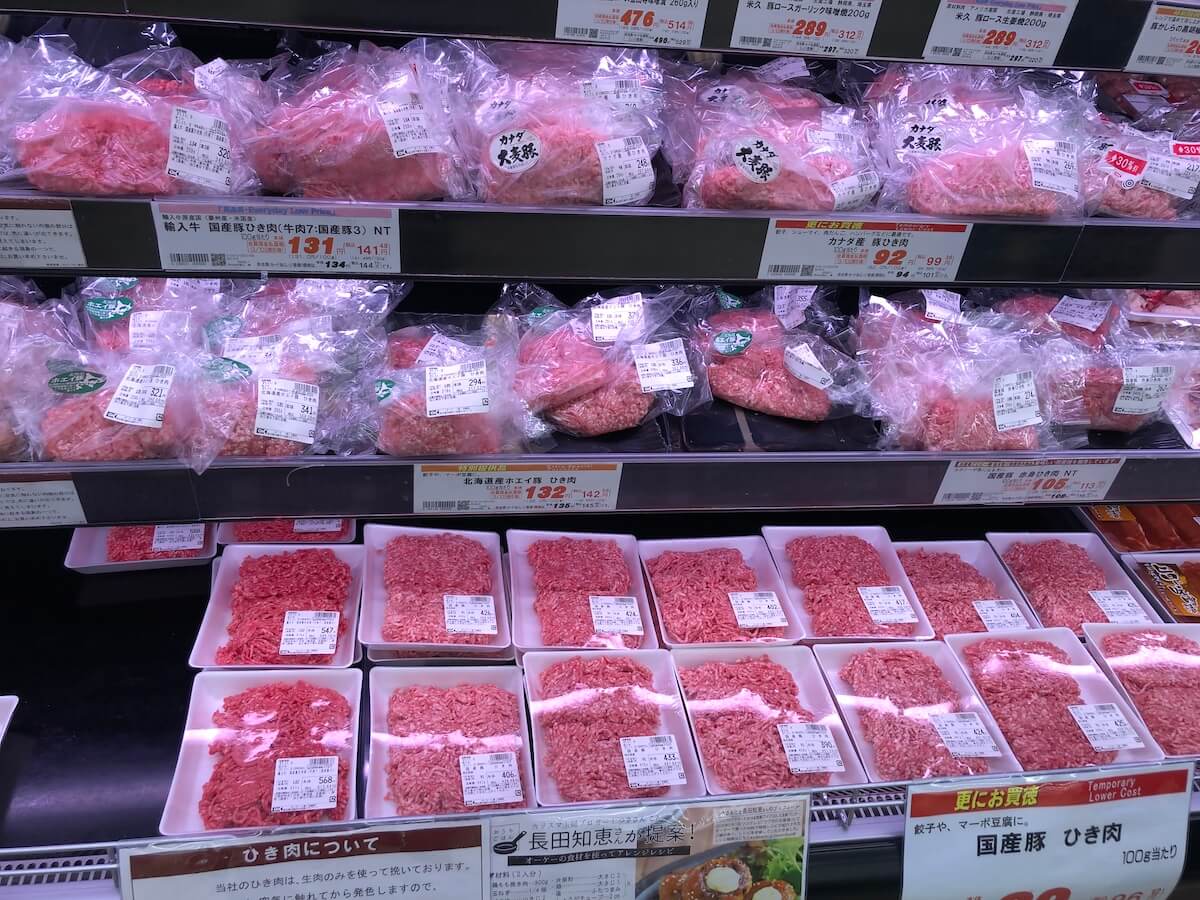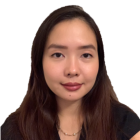Stepping into a supermarket in Japan is like entering a completely different world, especially if you are still learning the language. Only a minuscule portion of items have English labels. With the following tips and tricks, you can start doing your grocery shopping like a pro.
As chefs, my husband and I are quite picky with our supermarkets. There’s also the issue of cooking our favorite cuisines such as Italian, Japanese, American, Mexican, Filipino, and Chinese, of which not all ingredients are available in one place. Having visited over 100 different supermarkets around Japan, we’ve finally established a system that works.
There are two ways to go about supermarket shopping in Japan, depending on the length of your stay here. If you are visiting for a short while, then almost any supermarket would have the essentials you might need. If you are here permanently, then creating a list of your preferred venues is advised because you can end up saving a lot along the way, earn points with their respective point cards and get the ingredients you need for your everyday cooking.
Table of Contents
Match your cooking style to a particular supermarket
Not all supermarkets are the same in Japan. You have more upscale ones that offer the spinach at triple the price compared to wholesale grocery stores. With that said, it’s advised to explore your area to find your best options, especially if you plan on staying a while.
 For example, OK Corporation’s “Everyday Low Price” OK Store offers some of the cheapest meats and produce. Their tagline says it all, and carts that can accommodate four baskets proves that shoppers often buy in bulk, such as beer in 24-piece boxes. We go to OK for our mass grocery shopping of meats, produce, dairy, canned goods, ramen, rice, and other household essentials.
For example, OK Corporation’s “Everyday Low Price” OK Store offers some of the cheapest meats and produce. Their tagline says it all, and carts that can accommodate four baskets proves that shoppers often buy in bulk, such as beer in 24-piece boxes. We go to OK for our mass grocery shopping of meats, produce, dairy, canned goods, ramen, rice, and other household essentials.
Then you have Seijo Ishii, which offers international items you won’t find in regular stores such as top-quality Italian wine and cold cuts or a vast offering of herbs, spices, teas, and coffee. We go to Seijo Ishii for our prosciutto, pasta, Parmigiano Reggiano and wine needs. If you’re looking for a wide variety of seafood, prime meats like wagyu beef and poultry, head on over to a Tobu Store supermarket.
Kaldi is another noteworthy store to visit for international options and baking necessities. You can find vast options from Kaldi, from Vietnamese seasonings to frozen French croissants. By now, you have a glimpse of the shining points each supermarket has. It’s recommended to maximize them and get the most out of your grocery shopping trips.
Master the essential kanji
 One of the main challenges to supermarket shopping in Japan is the language barrier if you are not yet a master of Japanese. Even locals sometimes check out their phones when confirming a particular kanji character for a new ingredient they need for a recipe. The good news is you don’t need to memorize thousands of characters to get by.
One of the main challenges to supermarket shopping in Japan is the language barrier if you are not yet a master of Japanese. Even locals sometimes check out their phones when confirming a particular kanji character for a new ingredient they need for a recipe. The good news is you don’t need to memorize thousands of characters to get by.
Just grasp what the following mean, and you can complete your shopping list with ease. We’ve included the items that can easily be mistaken for something else, as well as the essential meat, dairy, and produce ingredients.
|
Meat and dairy |
Kanji |
Produce |
Kanji |
|
Beef |
牛肉 (gyuuniku) |
Spinach |
菠薐草 (hourensou) |
|
Pork |
豚肉 (butaniku) |
Napa Cabbage |
白菜 (hakusai) |
|
Chicken |
鶏肉 (toriniku) |
Bok Choy |
青梗菜 (chingensai) |
|
Fish |
魚 (sakana) |
Mushroom |
茸 (kinoko) |
|
Shrimp |
海老 (ebi) |
Cucumber |
胡瓜 (kyuuri) |
|
Dairy products |
乳 (nyuu) |
Bamboo shoots |
竹の子 (takenoko) |
|
Whole milk |
牛乳 (gyuunyuu) |
Bean sprout |
萌やし (moyashi) |
|
Low-fat milk |
低脂肪 (teishibounyuu) |
Ginger |
生姜 (shouga) |
|
Non-fat milk |
無脂肪 (mushibounyuu) |
Pumpkin |
南瓜 (kabocha) |
Once you know the core kanji of a particular item, it’s easy to check for variations. For example, chicken thigh or 鶏もも肉 (niwatori no momoniku) still has the same kanji mentioned above. It’s also easy to tell apart meat strips with thigh, breast, blocks and other meat cut variations. Of course, you can always have your phone on standby and do a quick Google translate if you’re at a loss. The app can scan the label and translate it instantly.
Read also:
Pick the right tofu
Are you a tofu-lover, whether cold, deep-fried, or used as a based ingredient for a dish? Then you’re in luck with Japanese supermarkets’ tofu offerings. Here’s a glimpse of a typical tofu aisle at a supermarket.
 Now for their translation and best uses. The two main types of tofu are Kinogoshi tofu (絹ごし豆腐) which is excellent for hiyayako (cold tofu appetizer) and salads and Momen tofu (もめん豆腐) for cooking and stir-frying. The first is silky soft, and delicate while the latter can handle more pressure.
Now for their translation and best uses. The two main types of tofu are Kinogoshi tofu (絹ごし豆腐) which is excellent for hiyayako (cold tofu appetizer) and salads and Momen tofu (もめん豆腐) for cooking and stir-frying. The first is silky soft, and delicate while the latter can handle more pressure.
Then you have other tofu variations such as Atsuage (厚揚げ), which is deep-fried tofu that’s golden brown on the outside and soft on the inside, making it great for soups and stews and gomadofu (胡麻豆腐), which is sesame tofu made from soybeans and great as is.
Meanwhile, yakitofu (焼き豆腐) is broiled firm tofu and easy to spot thanks to the brown spots. This is great for simmered dishes like sukiyaki. You can get this tofu in single-serve batches or for bigger dishes. They also have their expiration dates clearly stated on each pack, allowing you to plan your menu quickly.
Read also:
Grab a prepared meal for no-cook days
 An amazing feature of Japanese supermarkets is their prepared meals. You can find ready-to-eat meals at most supermarkets from salads and sushi to lasagna and cheesecakes. Just head on over to the aisles close to the cashiers, and you’ll spot the scrumptious dishes for your no-cook days. These are prepared fresh every day and often gone by 7 pm, so it’s best to go early to get more variety.
An amazing feature of Japanese supermarkets is their prepared meals. You can find ready-to-eat meals at most supermarkets from salads and sushi to lasagna and cheesecakes. Just head on over to the aisles close to the cashiers, and you’ll spot the scrumptious dishes for your no-cook days. These are prepared fresh every day and often gone by 7 pm, so it’s best to go early to get more variety.
Maximize point cards
Whenever we discover a new supermarket or any store that we like in our area, I always make it a point to inquire about their point card system. Many Japanese stores offer them; hence my wallet is filled with colorful cards. From our monthly household budget, I am able to get at least 5,000 worth of points which directly translates into Japanese yen. It’s not a bad idea to purchase that point card and use it with every purchase.
For example, OK Store’s card offers a 3% discount on your whole bill for cash payments. Meanwhile, the popular T-point card can be used in numerous stores across Japan – just look for that yellow “T” sign at the register. You get that sense of reward when you accumulate enough points to pay off your next purchase.
 If you’re ever at a loss, you can simply look for a supermarket staff (usually donning an apron) and ask if they have a particular ingredient or where it is located. You can also show them a photo of a similar item on your phone, and they can lead the way.
If you’re ever at a loss, you can simply look for a supermarket staff (usually donning an apron) and ask if they have a particular ingredient or where it is located. You can also show them a photo of a similar item on your phone, and they can lead the way.
Another tip for extra savings is to go at the end of the day for marked-down items on bread and prepared meals. Meats in OK Store also get marked down up to 30% if they’re nearing their expiration date, so you can check these out for even more savings.
I’m usually at the supermarket every week because Japanese ingredients don’t have very long shelf lives, so repeated trips on items like eggs, meats, tofu and ramen are needed. Still, grocery shopping is never dull because there are so many recipes to explore. You can also find seasonal ingredients that pop up every three months, like strawberries from March until May. Hopefully, your supermarket trips are as exciting as mine!
Be sure to follow us on Facebook, Instagram, Twitter, and Pinterest for more fun stuff!

Hana Otsuka
Hana is a freelance writer, finance analyst, and chef who pursues various hobbies. She aspires to be a philanthropist who helps out others in any way she can.








